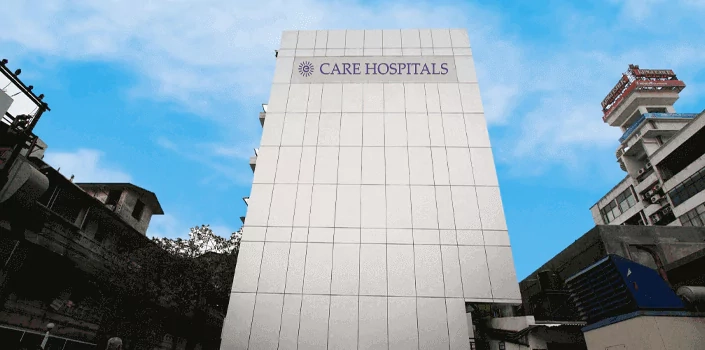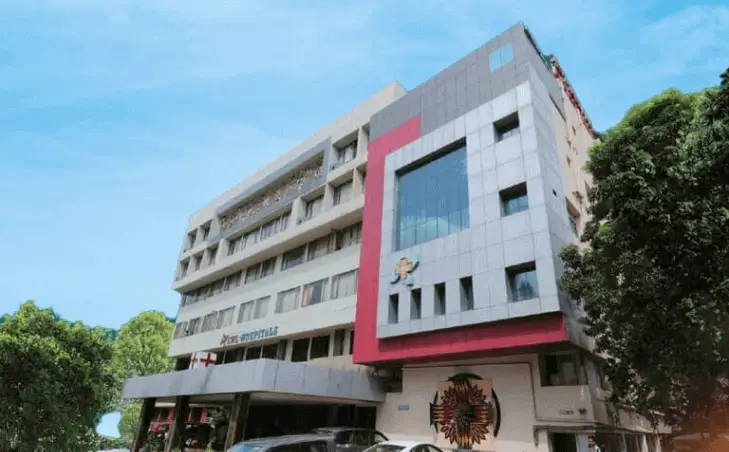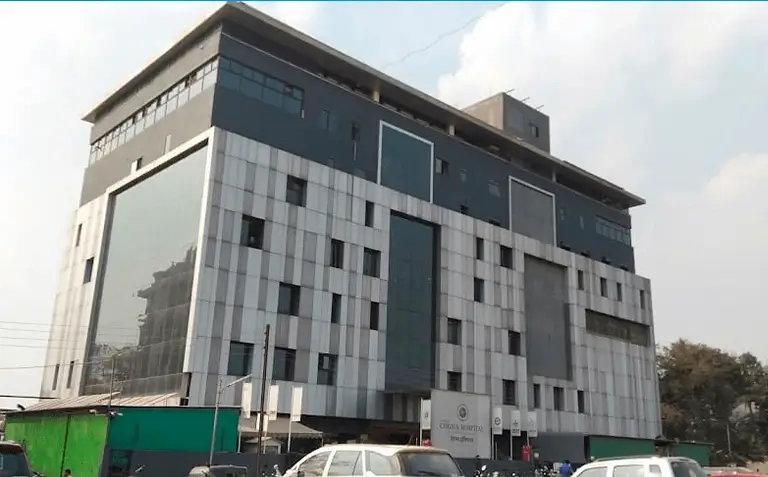-
Doctors
-
Specialities & Treatments
Centre of Excellence
Specialties
Treatments and Procedures
Hospitals & Directions HyderabadCARE Hospitals, Banjara Hills CARE Outpatient Centre, Banjara Hills CARE Hospitals, HITEC City CARE Hospitals, Nampally Gurunanak CARE Hospitals, Musheerabad CARE Hospitals Outpatient Centre, HITEC City CARE Hospitals, Malakpet
HyderabadCARE Hospitals, Banjara Hills CARE Outpatient Centre, Banjara Hills CARE Hospitals, HITEC City CARE Hospitals, Nampally Gurunanak CARE Hospitals, Musheerabad CARE Hospitals Outpatient Centre, HITEC City CARE Hospitals, Malakpet Raipur
Raipur
 Bhubaneswar
Bhubaneswar Visakhapatnam
Visakhapatnam
 Nagpur
Nagpur
 Indore
Indore
 Chh. Sambhajinagar
Chh. SambhajinagarClinics & Medical Centers
Book an AppointmentContact Us
Online Lab Reports
Book an Appointment
Consult Super-Specialist Doctors at CARE Hospitals

Best Hospital for Bipolar Hemiarthroplasty Surgery in Hyderabad
- Advanced Technology
- Shorter Hospital Stay
- Pre & Post-Operative Care
- All Insurance Accepted

Chat With Our Experts
Get second opinion on Whatsapp
25 lakhs+
Happy Patients
Experienced and
skilled surgeons
17
Health Care Facilities
Top most Referral Centre
for Complex Surgeries
Advanced Bipolar Hemiarthroplasty Surgery
Hip fractures impact thousands of people each year around the world. These injuries create life-changing effects for many older adults. Bipolar hemiarthroplasty emerges as one of the most effective surgical treatments for displaced femoral neck fractures, which represent nearly half of all hip fractures.
The demand for effective hip fracture treatments continues to grow. This underscores the importance of understanding treatment options like cemented bipolar hemiarthroplasty or uncemented bipolar hemiarthroplasty for patients facing these complex injuries.

Why Care Group Hospitals is Your Top Choice for Bipolar Hemiarthroplasty Surgery in Hyderabad
CARE Hospitals has become the go-to choose for patients who need bipolar hemiarthroplasty in Hyderabad. Here's what makes them special:
- Experienced Surgical Team: Their orthopaedic surgeons have years of experience in hip replacement surgeries with proven clinical success.
- Minimally Invasive Techniques: The surgical team uses state-of-the-art minimally invasive methods that leave smaller cuts and help patients heal faster.
- Complete Care Approach: The hospital provides full support from diagnosis to post-surgery care at reasonable prices.
- Patient-centred Focus: Each patient gets a personalised treatment plan to improve their quality of life.
The hospital's steadfast dedication makes sure patients get the best care throughout their treatment.
Best Bipolar Hemiarthroplasty Surgery Doctors in India


State-of-the-art Surgical Innovations at CARE Hospitals
CARE Hospitals leads the way with several groundbreaking approaches to bipolar hemiarthroplasty that give better results:
- Direct Anterior Approach (DAA): This intermuscular approach reaches the hip joint without detaching muscles. Patients can walk sooner. Studies show that the majority of DAA patients could walk independently within two weeks after surgery.
- Conjoined Tendon-preserving Posterior (CPP) Approach: This method reduces post-surgery dislocations without adding complications.
CARE Hospitals uses advanced wiring fixation techniques during bipolar hemiarthroplasty. These techniques are a great way to get better fixation of trochanteric fracture fragments.
Conditions for Bipolar Hemiarthroplasty Surgery
CARE Hospitals recommends bipolar hemiarthroplasty for:
- Displaced femoral neck fractures, especially in elderly patients
- Unstable intertrochanteric fractures
- Subcapital neck fractures at high risk of femoral head avascular necrosis (Garden III and IV fractures)
- Cases where osteosynthesis might cause complications like nonunion or cut-out
- Patients who need to move early to stay active in daily life
Intertrochanteric fractures have become more common as people live longer. Bipolar hemiarthroplasty helps patients move earlier than osteosynthesis. This quick mobility can reduce post-surgery cerebrovascular accidents.
Types of Bipolar Hemiarthroplasty Procedures
CARE Hospitals offers different types of bipolar hemiarthroplasty based on each patient's needs:
- Cemented Bipolar Hemiarthroplasty: Surgeons use bone cement (methyl methacrylate) to fix the prosthesis. Patients can bear weight and walk with aids right away. This works well for elderly patients with weak bones.
- Uncemented Bipolar Hemiarthroplasty: The prosthesis surface helps bone grow without cement. Doctors suggest limited weight bearing for 6–12 weeks so the bone can grow into the prosthesis.
- Modular Bipolar Hemiarthroplasty: This modern method lets surgeons mix different stems, neck lengths, and heads. Patients get a better-fitting prosthesis that matches leg length and reduces dislocation risk.
Each type has a unique bipolar design with two bearings that let the head move during motion. This dual movement system reduces wear on the hip joint, making the replacement last longer.
About Surgery
The experience of getting back hip mobility through bipolar hemiarthroplasty has several significant stages. Your original preparations for post-operative care are vital steps that ensure successful outcomes if you have femoral neck fractures.
Pre-surgery Preparation
Patients must complete several important steps before bipolar hemiarthroplasty:
- Physical Examinations: Doctors get a full picture to assess overall health status.
- Imaging Tests: X-rays, CT scans, and MRIs help determine the extent of hip damage.
- Preoperative Assessments: These confirm the patient's fitness for surgery.
- Blood Tests: These check clotting function and detect underlying infections.
You will receive specific instructions about medications, fasting requirements and surgery day expectations.
Bipolar Hemiarthroplasty Surgical Procedure
The surgical procedure takes 60-90 minutes and has these key steps:
- Anaesthesia Administration: Doctors use general or spinal anaesthesia based on the patient's condition.
- Surgical Approach: The surgeon creates an incision along the outer thigh through an anterolateral, direct lateral, direct anterior, or posterior approach.
- Femoral Head Removal: The surgeon detaches the damaged femoral head from the acetabulum and femur.
- Medullary Canal Preparation: The femur gets hollowed out to fit the prosthetic stem.
- Prosthesis Placement: A metal stem goes into the prepared femoral canal, using bone cement (cemented) or a press-fit (uncemented) design.
- Head Attachment: The surgeon secures an artificial head to the stem.
- Stability Check: The surgeon checks proper joint stability and range of motion before closing.
Post-surgery Recovery
Recovery after bipolar hemiarthroplasty moves through several phases:
- Initial Hospital Stay: Patients stay in the hospital for 3-5 days.
- Pain Management: Medications control discomfort during healing.
- Early Mobilisation: Most surgeons encourage standing and walking with support within 24-48 hours after surgery.
- Progressive Weight-bearing: Patients start with walking aids and toe-touch weight-bearing, then progress to full weight-bearing at six weeks.
Recovery protocols can vary. Patients with cemented prostheses often start immediate weight-bearing with walking aids. Those with uncemented prostheses might need restricted weight-bearing for 6-12 weeks.
Risks and Complications
Bipolar hemiarthroplasty is usually successful but has certain risks:
- Dislocation
- Deep wound infections
- Periprosthetic fracture
- Aseptic loosening causing prosthesis failures
Benefits of Bipolar Hemiarthroplasty Surgery
This surgery offers many advantages over other treatments:
- Better Stability: The dual-bearing design reduces dislocation risk by a lot.
- Better Mobility: Patients get more freedom of movement and natural hip joint motion.
- Less Wear and Tear: The dual-motion system reduces friction and extends implant life.
- Faster Recovery: Recovery time is shorter compared to total hip replacement.
- Better Bone Structure: Lower risk of bone loss helps maintain natural structure.
Insurance Assistance for Bipolar Hemiarthroplasty Surgery
Most health insurance plans cover this surgery, but coverage details vary:
- Plans usually cover surgical costs, implants, hospital stays, and post-operative rehabilitation.
- Pre-existing conditions, hospital/surgeon choice, and revision surgeries affect coverage.
You should really check your insurance policy details and confirm coverage terms with your provider before surgery.
Second Opinion for Bipolar Hemiarthroplasty Surgery
Getting more expert opinions helps patients who think over bipolar hemiarthroplasty. This helps them:
- Confirm the diagnosis and the necessity of surgery
- Learn about other treatment options
- Understand risks and benefits
- Feel confident about their treatment choice
CARE Hospitals' experienced orthopaedic surgeons give complete second opinions. They assess cases really well to give valuable insights and recommendations.
Conclusion
Bipolar hemiarthroplasty gives older adults a chance to regain their mobility and independence after devastating hip fractures. CARE Hospitals has become a trusted centre for this specialised surgery with its 15 years of experience and state-of-the-art techniques.
The surgical experience might feel overwhelming initially. CARE Hospitals makes it simple with detailed pre-surgery preparation and focused post-operative care. Patients start walking with support within days after surgery and build strength gradually during recovery.
New techniques like the Direct Anterior Approach and Conjoined Tendon-Preserving Posterior methods improve patient outcomes significantly. CARE Hospitals leads these advances and gives hope to many people affected by hip fractures.
Bipolar Hemiarthroplasty Surgery Hospitals in India
-
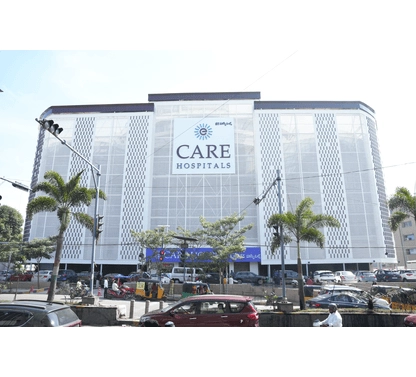
CARE Hospitals, Banjara Hills, Hyderabad
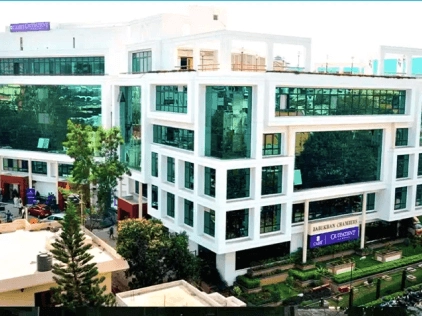
CARE Hospitals Outpatient Centre, Banjara Hills, Hyderabad

CARE Hospitals, HITEC City, Hyderabad
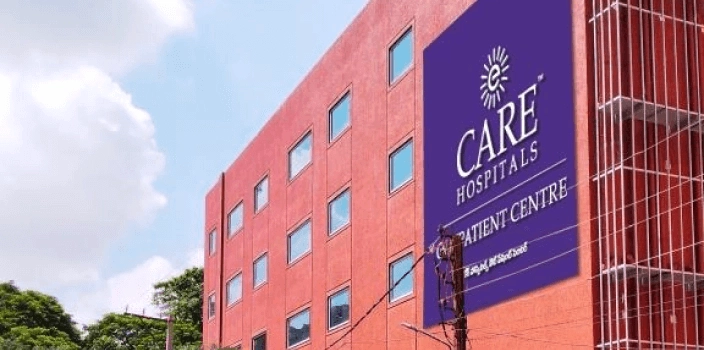
CARE Hospitals Outpatient Centre, HITEC City, Hyderabad

Gurunanak CARE Hospitals, Musheerabad, Hyderabad

CARE Hospitals, Nampally, Hyderabad
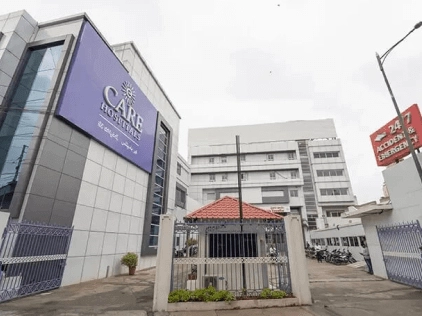
CARE Hospitals, Malakpet, Hyderabad

CARE Hospitals, Bhubaneswar
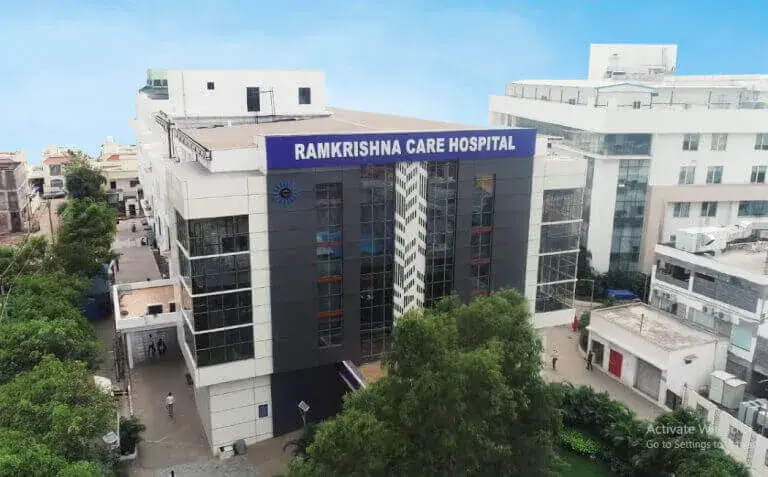
Ramkrishna CARE Hospitals, Raipur
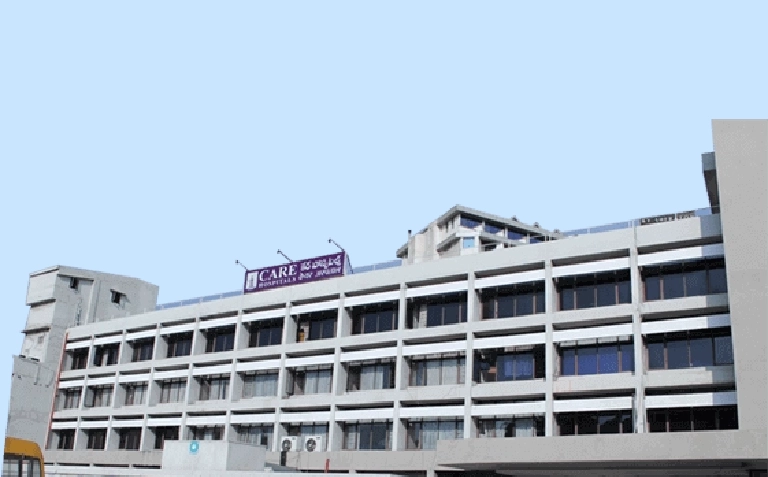
CARE Hospitals, Ramnagar, Visakhapatnam

CARE Hospitals, Health City, Arilova
Related Surgeries
- Best Hospital for Spinal Fusion Surgery in Hyderabad
- Best Hospitals for Ankle Surgery in Hyderabad
- Best Hospital for Carpal Tunnel Release Surgery in Hyderabad
- Best Hospitals for Ligament Repair Surgery in Hyderabad
- Best Hospitals for Elbow Surgery in Hyderabad
- Best Hospitals for Arthroscopic Meniscal Repair Surgery in Hyderabad
- Best Hospital for Arthroscopy Surgery in Hyderabad
- Best Hospital for ORIF(Open Reduction Internal Fixation) Surgery in Hyderabad
- Best Hospital for Spine Decompression Surgery in Hyderabad
- Best Hospitals for Shoulder Arthroscopy Surgery in Hyderabad
- Best Hospital for K-Wire Fixation Surgery in Hyderabad
- Best Hospitals for Arthroscopic Knee Aspiration Surgery in Hyderabad
- Best Hospital for Bipolar Hemiarthroplasty Surgery in Hyderabad
- Best Hospital for Hemarthrosis Knee Surgery in Hyderabad
- Best Hospital for Meniscus Surgery (Meniscectomy) in Hyderabad
- Best Hospital for Proximal Femoral Nail (PFN) Surgery in Hyderabad
- Best Hospitals for Osteotomy Surgery in Hyderabad
- Best Hospitals for Arthroscopic Reconstruction Surgery in Hyderabad
- Best Hospitals for Bone Marrow Aspirate Concentrate (BMAC) Surgery in Hyderabad
- Best Hospital for Tension Band Wiring Surgery in Hyderabad
- Best Hospital for Shoulder Rotator Cuff Repair Surgery in Hyderabad
- Best Hospital for Shoulder Replacement Surgery in Hyderabad
- Best Hospital for Humerus Plating Surgery in Hyderabad
- Best Hospital for Tendon Repair Surgery in Hyderabad
- Best Hospital for Spinal Decompression Surgery in Hyderabad
- Best Hospital for Posterior Cruciate Ligament (PCL) Surgery in Hyderabad
- Best External Fixator Surgery in Hyderabad
- Best Hospital for UCL Reconstruction Surgery in Hyderabad
Frequently Asked Questions
Bipolar hemiarthroplasty treats femoral neck fractures by replacing damaged hip joints with artificial ones. This procedure differs from total hip replacement because it only replaces the femoral head (ball portion) while keeping the natural socket intact.
Doctors recommend this procedure for:
- Displaced femoral neck fractures, especially in elderly patients
- Patients who can walk outdoors independently
- Cases where doctors couldn't treat femoral neck fractures by conservative means
Bipolar hemiarthroplasty has proven safer with lower dislocation rates than both unipolar arthroplasty and total hip replacement. The procedure comes with some risks, like any surgery.
The surgery usually takes 60-90 minutes. However, the time might be extended in complicated cases.
Yes, it is a major surgery that needs general or spinal anaesthesia and involves joint replacement. The procedure takes less time than total hip replacement because it's not as complex.
The potential risks include:
- Deep vein blood clots
- Infection
- Dislocation
- Nerve or blood vessel injury in rare cases
- Periprosthetic femoral fractures
Walking ability returns quickly after surgery. Patients who undergo the Direct Anterior Approach start walking sooner than those with other techniques.
Most patients fully recover in about 6 weeks and return to their daily activities without restrictions. They can sit comfortably 1-2 days after surgery and walk independently within 4-5 days, depending on the surgical approach used.
After bipolar hemiarthroplasty you should avoid:
- High-impact activities like running or jumping
- Bending at the hip beyond 90°
- Twisting the operated leg
- Crossing your legs
- Lifting heavy objects
Doctors use general or spinal anaesthesia based on the patient's condition.
Yes, bipolar hemiarthroplasty can be performed using minimally invasive techniques and robotic assistance. These less invasive procedures shorten surgical time, reduce trauma and improve surgical accuracy.
Still Have a Question?





































